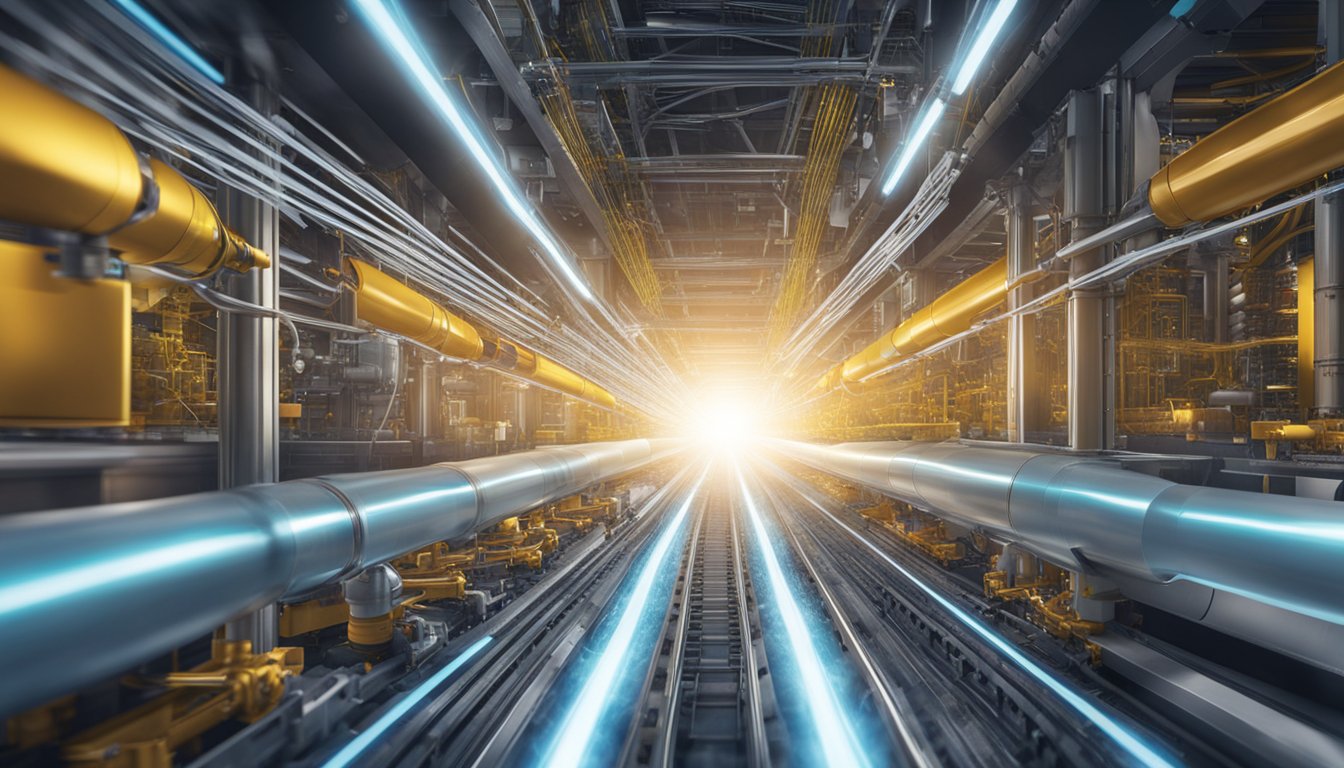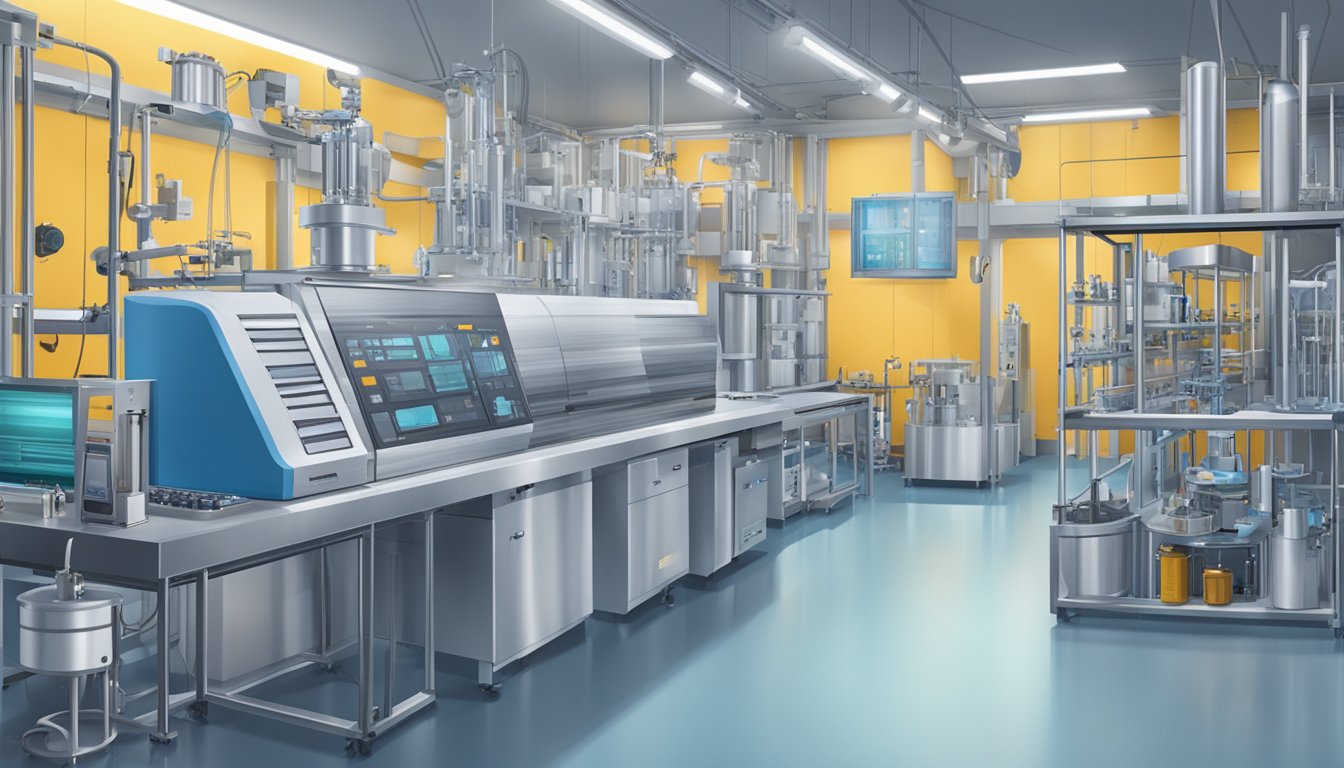Accelerator DCBs: A Comprehensive Guide to Understanding and Implementing Them
19/01/2024
Accelerator DCBS is a type of sulfenamide accelerator used in natural and synthetic rubbers to improve their performance characteristics. It is a delayed-action accelerator that is particularly useful in applications where extended flow times are required. Accelerator DCBS is often used in the manufacturing of rubber goods that are subjected to high dynamic stresses.

Accelerator DCBS is a primary accelerator that can be used alone or in combination with other accelerators to achieve the desired curing properties. It is compatible with a wide range of rubbers, including natural rubber, SBR, NBR, and EPDM. Accelerator DCBS is available in various forms, including granules, oiled powder, and powder.
The use of Accelerator DCBS has become increasingly popular in the rubber industry due to its ability to improve the performance of rubber products. Its unique properties make it ideal for use in a wide range of applications, including automotive parts, conveyor belts, and footwear. Understanding the fundamentals of Accelerator DCBS, its types, and applications can help manufacturers design and construct better rubber products that meet the operational challenges and regulatory compliance issues.
Key Takeaways
- Accelerator DCBS is a delayed-action sulfenamide accelerator used in natural and synthetic rubbers to improve their performance characteristics.
- It is compatible with a wide range of rubbers and is often used in the manufacturing of rubber goods that are subjected to high dynamic stresses.
- Understanding the fundamentals of Accelerator DCBS, its types, and applications can help manufacturers design and construct better rubber products that meet the operational challenges and regulatory compliance issues.
Fundamentals of Accelerator DCBs

Definition and Purpose
Accelerator DCBS is a delayed action sulfenamide accelerator used in natural and synthetic rubbers. It is added to rubber compounds to increase the speed of vulcanization and to permit vulcanization to proceed at lower temperatures and with greater efficiency. The primary purpose of DCBS is to reduce the time required for vulcanization, which is the process by which rubber is converted into a more durable material.
Components of a DCB
The chemical name for DCBS is N,N-dicyclohexyl-2-benzothiazole sulfenamide. It is a white or light yellow powder that is soluble in acetone, benzene, and chloroform. DCBS is typically used in combination with other accelerators, such as MBTS or TBBS, to achieve a faster rate of vulcanization.
DCBS is known for its delayed action, which means that it does not immediately start the vulcanization process when added to a rubber compound. Instead, it begins to work after a certain period of time has elapsed. This makes it particularly useful for rubber goods that are subjected to high dynamic stresses, such as tires and conveyor belts.
In summary, accelerator DCBS is a key component in the production of natural and synthetic rubber products. Its purpose is to reduce the time required for vulcanization, and it is typically used in combination with other accelerators to achieve the desired rate of vulcanization. Its delayed action makes it particularly useful for rubber goods subjected to high dynamic stresses.
Types of Accelerator DCBs

Accelerator DCBS (Benzothiazyl-2-Dicyclohexyl Sulfenamide) is a delayed action sulfenamide accelerator used in natural and synthetic rubbers. It is recommended for applications where exceptionally long flow times are required. DCBS is a white or light yellow powder with a slight odor. It is soluble in chloroform, benzene, and carbon disulfide, and slightly soluble in acetone, ethanol, and gasoline.
Linear Accelerators
Linear accelerators, also known as linacs, are the most common type of accelerator used in radiation therapy. They use high-frequency electromagnetic waves to accelerate electrons to nearly the speed of light. The electrons are then directed at a target to produce high-energy X-rays or other types of radiation. Linear accelerators are used to treat a wide range of cancers, including lung, breast, prostate, and brain cancer.
Circular Accelerators
Circular accelerators, also known as cyclotrons, are used to accelerate charged particles, such as protons or ions, in a circular path. The particles are accelerated by a magnetic field and then directed at a target to produce high-energy radiation. Cyclotrons are used in medical applications, such as proton therapy for cancer treatment, and in research to study the properties of matter.
In summary, accelerator DCBS is a delayed action sulfenamide accelerator used in natural and synthetic rubbers. It is recommended for applications where exceptionally long flow times are required. Linear accelerators and circular accelerators are two types of accelerators used in radiation therapy and research.
Applications of Accelerator DCBS
Accelerator DCBS is a versatile chemical compound that has many applications in various industries. In this section, we will explore some of the most common applications of DCBS.
Medical Uses
DCBS is used in the medical industry as an accelerator for natural and synthetic rubber products. It is particularly suitable for rubber goods that are subjected to high dynamic stresses, such as medical gloves, tubing, and catheters. DCBS is known for its excellent anti-scorching quality and processing safety, making it a popular choice for medical applications.
Industrial Uses
DCBS is widely used in the industrial sector as an accelerator for rubber products. It is commonly used in the production of tires, conveyor belts, and other rubber products that require high durability and strength. DCBS is known for its delayed action, which makes it ideal for applications where exceptionally long flow times are required.
Research Facilities
DCBS is also used in research facilities for various applications. It is used in the production of rubber compounds for research purposes, such as testing the properties of rubber under different conditions. DCBS is also used in the production of rubber-based adhesives and coatings for research purposes.
In conclusion, DCBS is a versatile chemical compound that has many applications in various industries, including medical, industrial, and research facilities. Its delayed action and anti-scorching quality make it a popular choice for applications that require exceptionally long flow times and high durability.
Design and Construction
Engineering Principles
The design and construction of rubber products require a deep understanding of the engineering principles involved. Accelerator DCBS is a delayed action sulfenamide accelerator that is used in natural and synthetic rubbers. It is recommended for applications where exceptionally long flow times are required. DCBS is particularly suitable for rubber goods subjected to high dynamic stresses. It is a primary accelerator that can be used alone or in combination with many secondary accelerators. DCBS offers the best scorch resistance of all commonly used sulfenamide accelerators.
Material Selection
The material selection process is critical when designing and constructing rubber products. The use of high-quality materials ensures that the final product will be durable and long-lasting. When selecting materials for the construction of rubber products that use accelerator DCBS, it is important to consider the compatibility of the materials. DCBS is compatible with a wide range of rubbers, including natural rubber, SBR, NBR, and EPDM.
Safety Considerations
Safety considerations are essential when working with accelerator DCBS. DCBS is a hazardous substance that can cause skin and eye irritation and may be harmful if ingested or inhaled. It is important to wear protective clothing, gloves, and eye protection when handling DCBS. In addition, DCBS should be stored in a cool, dry, and well-ventilated area away from sources of heat and ignition. Finally, it is important to follow all safety procedures and guidelines when working with DCBS to ensure the safety of workers and the environment.
Operational Challenges
When it comes to using Accelerator DCBS, there are several operational challenges that companies may face. These include maintenance requirements, upgrading and scalability, and error handling and troubleshooting.
Maintenance Requirements
One of the main challenges associated with using Accelerator DCBS is the need for regular maintenance. Companies that use this accelerator need to ensure that they are regularly checking the equipment and making any necessary repairs. This can be time-consuming and expensive, but it is essential to keep the accelerator running smoothly.
Upgrading and Scalability
Another challenge associated with using Accelerator DCBS is upgrading and scalability. As companies grow and expand, they may need to upgrade their equipment to keep up with demand. This can be a costly and time-consuming process, but it is essential to ensure that the accelerator can handle increased production.
Error Handling and Troubleshooting
Finally, companies that use Accelerator DCBS may encounter errors or other issues that require troubleshooting. This can be a complex process, and it is essential to have skilled technicians who can quickly identify and resolve any issues that arise.
Overall, while Accelerator DCBS offers many benefits, it is essential to be aware of the operational challenges that come with using this accelerator. By taking steps to address these challenges, companies can ensure that they are getting the most out of their investment in Accelerator DCBS.
Regulatory and Compliance Issues
Standards and Certifications
Accelerator DCBS is a chemical compound used in the production of rubber. It is important to note that DCBS is not regulated by any specific standard or certification agency. However, it is recommended that manufacturers adhere to industry best practices and guidelines to ensure product safety and quality.
One such guideline is the European Union’s Registration, Evaluation, Authorization and Restriction of Chemicals (REACH) regulation. The REACH regulation aims to protect human health and the environment by requiring manufacturers to identify and manage the risks associated with their chemical substances. While DCBS is not specifically listed in the REACH regulation, it is important for manufacturers to ensure that their use of DCBS complies with the regulation’s overall objectives.
Environmental Regulations
In addition to complying with industry best practices and guidelines, manufacturers of rubber products that use DCBS must also adhere to environmental regulations. One such regulation is the Resource Conservation and Recovery Act (RCRA) in the United States. The RCRA regulates the disposal of hazardous waste and requires manufacturers to properly manage and dispose of any waste generated during the production process.
Manufacturers must also comply with the regulations set forth by the Environmental Protection Agency (EPA) in the United States. The EPA regulates the release of chemicals into the environment and requires manufacturers to obtain permits before releasing any pollutants into the air, water, or soil. It is important for manufacturers to ensure that their use of DCBS does not violate any of the EPA’s regulations.
Overall, while there are no specific standards or certifications for DCBS, manufacturers must adhere to industry best practices and guidelines, as well as environmental regulations, to ensure the safety and quality of their products.
Future Developments
Technological Advances
Accelerator DCBS is a widely used chemical in the rubber industry. Its demand is expected to increase in the coming years due to the growing demand for rubber products in various industries. To meet this demand, manufacturers are investing in research and development to improve the production process and quality of Accelerator DCBS.
One of the significant technological advances in the production of Accelerator DCBS is the use of nanotechnology. Nanoparticles of Accelerator DCBS can significantly enhance the properties of rubber products. The use of nanotechnology can improve the dispersion of Accelerator DCBS in the rubber matrix, leading to better performance of rubber products.
Another technological advancement is the development of more efficient and eco-friendly production processes. The use of renewable raw materials and green chemistry methods can reduce the environmental impact of the production process.
Emerging Applications
Accelerator DCBS is mainly used in the production of tires. However, its application is not limited to the tire industry. With the increasing demand for rubber products in various industries, new applications of Accelerator DCBS are emerging.
One of the emerging applications is in the production of rubber seals and gaskets. Rubber seals and gaskets are used in various industries, including automotive, aerospace, and construction. The use of Accelerator DCBS can improve the performance and durability of rubber seals and gaskets.
Another emerging application is in the production of rubber hoses. Rubber hoses are used in various industries, including oil and gas, chemical, and food processing. The use of Accelerator DCBS can improve the heat resistance and flexibility of rubber hoses.
In conclusion, the future of Accelerator DCBS looks promising with the development of new technologies and emerging applications. The use of nanotechnology and eco-friendly production processes can improve the quality and reduce the environmental impact of Accelerator DCBS production. The emerging applications of Accelerator DCBS in various industries can further increase its demand in the market.




